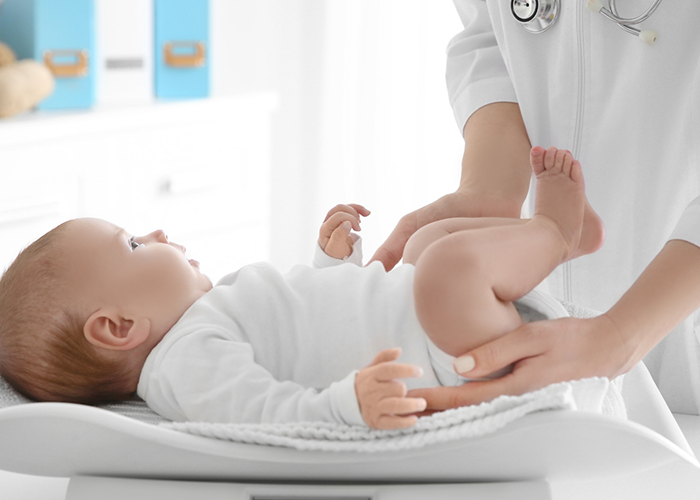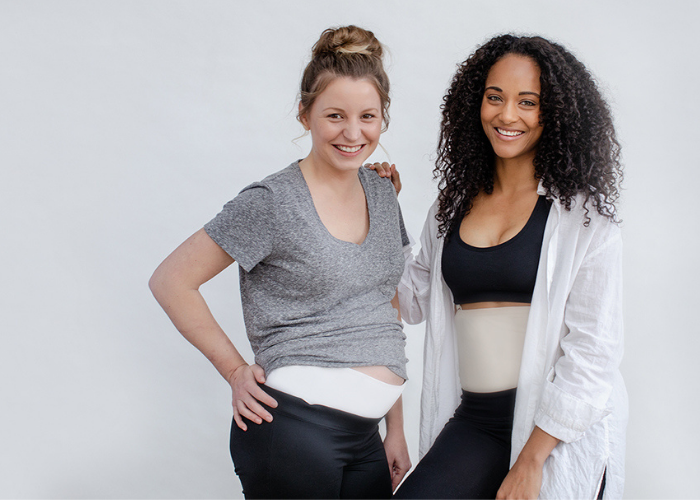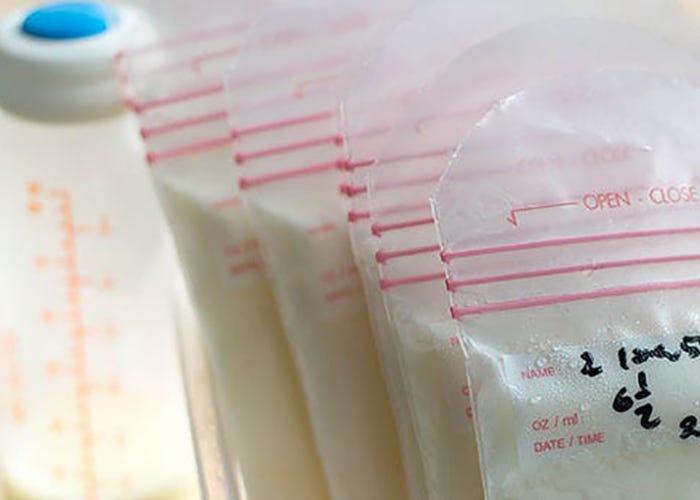
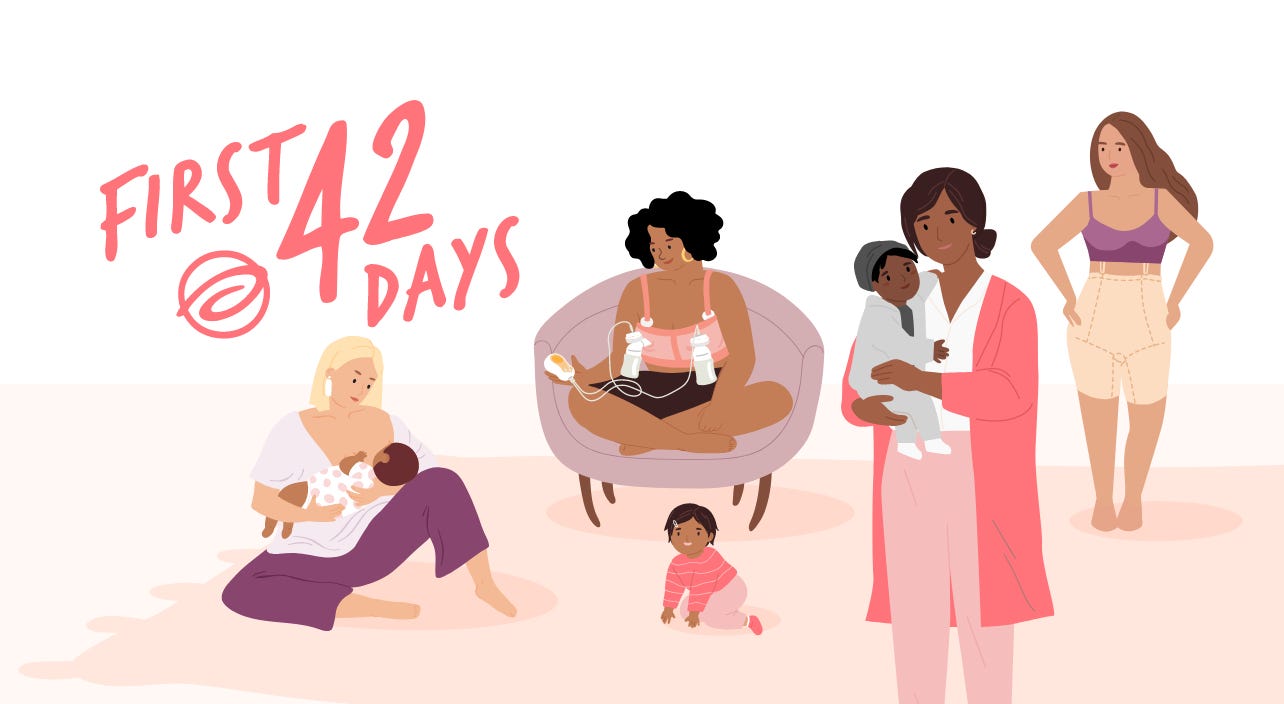
Congratulations, mama! You've given birth and are now entering into the first 42 days (six weeks) of your postpartum recovery. There's so much to learn about your new baby and your postpartum body, and it can be hard to know where to turn for accurate information and advice.
First and foremost, it's important to know that everyone’s experience is different. Yes, you might dance out of the hospital in your pre-pregnancy jeans, but it’s more likely that you’ll be shoving all the extra disposable panties into your duffel bag as you shuffle out in your baggiest sweatpants. It’s this huge variation in experiences, especially for first-time moms, that makes planning for early postpartum recovery so difficult. In spite of this variety, learning about what to expect in the early weeks of recovery can help you to prepare for this crucial period of healing.
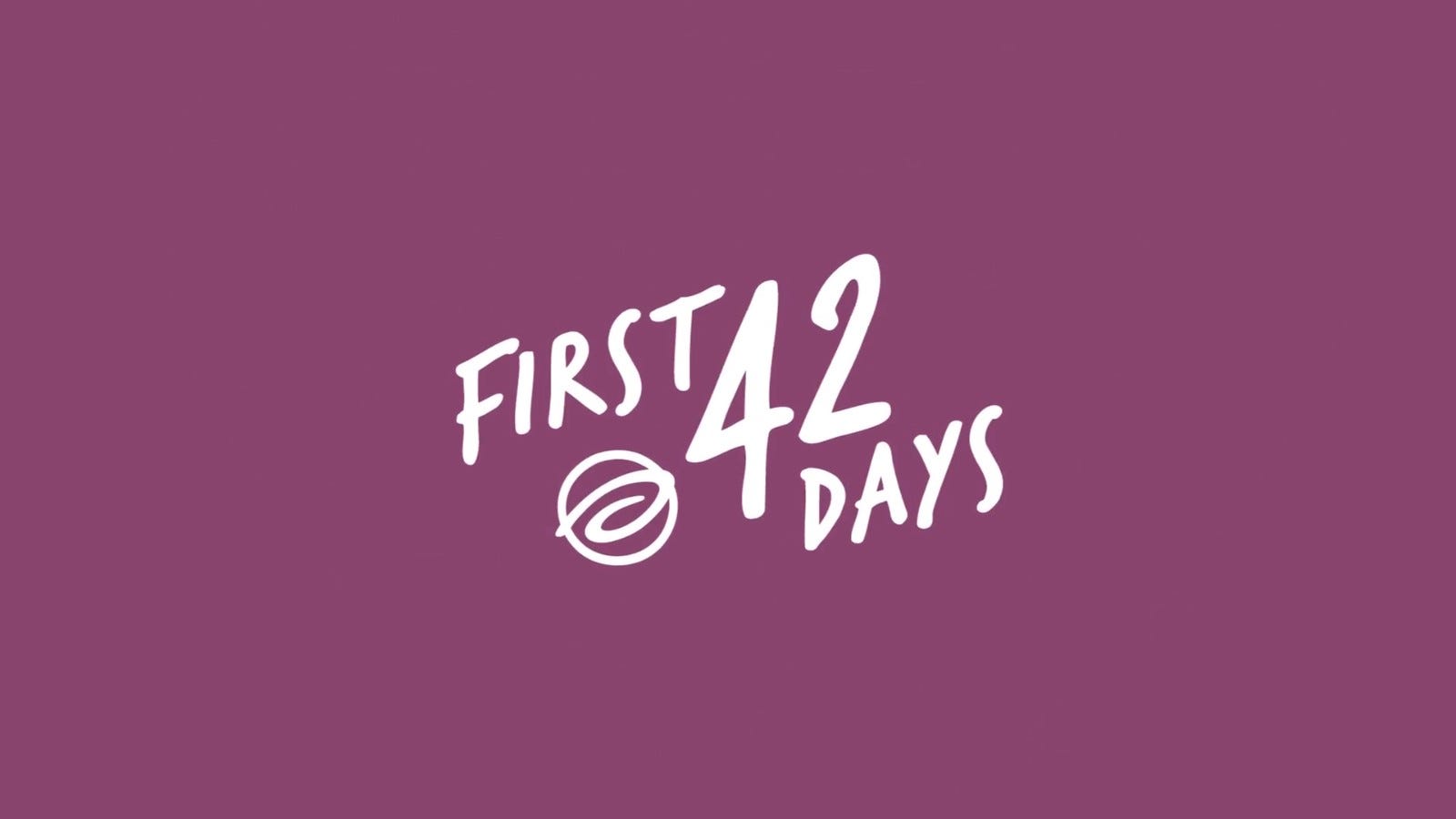
The First 42 Days Postpartum – Week by Week
Here’s what you can do to stay comfortable and kick-start the birth recovery process, from day one through week six.
- Ask to see a physical therapist. This is particularly important if you’ve had a birth that has not gone entirely to plan, ie: unplanned or emergency cesarean, pelvic floor injury, having difficulty moving around after birth. Ask your provider if a PT can come to see you before you leave the hospital, especially if you’re having trouble moving around or have questions about how to manage your recovery process.
- Ask to see a lactation consultant. Lactation consultants are also available in many hospitals. They can help you and your baby establish an effective latch, answer initial questions that might come up about breastfeeding, and help you feel prepared and comfortable to head home with your little one.
- Breathe. Whether you had a c-section or a vaginal delivery, try to take full breaths whenever you can. Discomfort at a c-section scar or at the perineum can cause us to hold our breath, or “guard” those areas with our whole body. Taking full, diaphragmatic breaths on purpose can help us release those tense areas and can help manage some discomfort.
- Use support. If you’ve had a c-section, you may find it helpful to hug a pillow when you move from one position to another, like rolling over in bed or standing up from sitting down. The pressure from the pillow will help to brace and protect your incision to limit movement and help with core control. You might also find a postpartum compression garment to be helpful, though look for one that is flexible and supports both the belly and the pelvic floor.
- Your first postpartum poop might seem stressful, but it doesn’t have to be painful! Drink plenty of water, make sure to eat enough fiber, and consider taking over the counter stool softeners for the first few days (discuss this with your physician first). Positioning with a stool under your feet and using gentle breathing strategies can make that first pass easier, as well.
- Perineal stitches from a tear or episiotomy might make even the softest couch feel uncomfortable. Try sitting on a donut pillow or a Boppy pillow to alleviate pressure on your pelvic floor for the first few days. Once the initial inflammation subsides, it’s best to ditch the donut for a regular cushion.
- Postpartum abdominal compression garments can help you feel supported as you move around for the first few weeks. Though there are many on the market, you’ll want to look for one that’s stretchy with full coverage of the abdomen and pelvic floor so that you feel supported but not squeezed.
- Hormones are very much still regulating in the early postpartum weeks. Some women become emotional more easily than normal for the first few days after birth. These “baby blues” are common and usually pass within a few days, but they should not be dismissed if you’re really not feeling well. If you’re experiencing intense emotion or sadness, or if it’s interfering with your ability to care for yourself or your baby, please reach out to your provider or a mental health professional immediately.
- Many first time moms are surprised to find that they may bleed for several weeks after a vaginal delivery. Keep an eye out for large clots, large volumes of blood, or foul smelling blood or discharge, and call your provider if you’re at all concerned.
- You may still be experiencing cramping as your uterus returns to normal size. These abdominal “afterbirth” pains may be more noticeable during nursing or pumping, as the oxytocin release encourages the uterus to contract.
- Mental health is a challenge for many moms, particularly as sleep deprivation, caring for a newborn, and physical recovery are all piling up. It might be helpful to speak to your partner about the signs of postpartum depression and anxiety so they can keep an eye on your wellbeing. It’s never too early to reach out to a mental health professional for support. Call your provider for recommendations in your area.
- Many moms experience postpartum swelling. You may want to keep those compression socks in the rotation for a little extra support. Call your provider immediately if you’re having any questions or concerns about your postpartum swelling, particularly if swelling is worsening instead of improving over time, or is accompanied by headaches, blurred vision, sensitivity to light or occuring only on one side.
- During week two, your exercise program will involve moving intentionally through the basics of baby-care tasks, like picking your baby up from the crib, standing up off the couch or chair, and rolling over in bed. Try to exhale with effort, so that you’re not putting too much pressure down into your still-recovering pelvic floor and abdominal incision.
- Week three can be a tough one in terms of adjusting to parenthood. The helpful stream of visitors and dinner drop-offs might start to slow down. The hormonal adjustments that kept you afloat for the first week or two after birth are starting to level out, and the sleep deprivation might be catching up, as well. For all these reasons and more, week three is an ideal time to practice asking for help with day to day tasks and doing what you can to keep your own mental health a priority.
- Recovering from a c-section? By week 3, your incision may begin to look fully closed. Though it might be feeling more comfortable, it still needs a few more weeks to heal before bringing on any strenuous activity.
- If you’re breastfeeding, you might be wondering about how and when to manage a pumping schedule, especially if you’re going back to work.
- As you start to incorporate more walking and movement into your routine, keep an eye out for signs that could indicate you need to slow down. Increased bleeding, incontinence, pain, heaviness, or a feeling that something is falling out of your vagina could all be related to doing too much physical activity, too soon. Gradual progression is key. Do just what you can comfortably achieve without symptoms, and work back up to your usual levels of activity in the coming weeks.
- Have you heard about the c-section bandage system from Motif? These bandages can help with efficient and effective healing in the early stages, and help to soften and desensitize scar tissue once you’re healed. The first two out of three steps are often covered by insurance through Aeroflow.
- Got questions about mental health? Postpartum Support International is an excellent resource. Find a list of providers in your area who have completed postpartum-specific training for mental health concerns. Remember, you don’t have to wait until you reach your lowest point to look for help. Mild postpartum depression and anxiety is still worth discussing, so that you can enjoy your time as a new mom as much as possible.
- By now, you might be itching to get back to the gym, or to lace up those running shoes. Take a deep breath: it’s not time to hit the pavement just yet. Professionals recommend easing back into running between 12-16 weeks postpartum, and the same goes for strenuous weightlifting or gymnastics activities. So what kind of exercise can you be doing right now? Basic core reconnection and stability-oriented exercises, like bridges, squats, modified planks, single leg balance, and walking or stationary cycling are all great low-impact options to build that stability and reconnection you’ll need later on.
- During week five, you might be starting to think about what comes next with pelvic floor and abdominal rehabilitation. Your body has just been through a major shift, and most moms will find it helpful to focus on building back some strength after birth.
- Every mom is a candidate for pelvic physical therapy after birth. No matter how your baby came out, or how “bounced back” you may feel, it’s always a good idea to get scheduled for a check-up so that you can be sure you’re all set up for the next phases of your life. If you’re having any of the symptoms listed below you may want to call a pelvic PT sooner rather than later. Be sure to discuss your concerns with your healthcare provider at your 6-week check-up, as well.
- Had a vaginal birth? If you are noticing leakage (incontinence), pain at the perineum or pelvis, or a sensation of downward pressure, a pelvic PT can help you move toward full recovery.
- Had a c-section? If you have significant pain or sensitivity at your incision or pelvis, urinary urgency or incontinence, or low back pain, a pelvic PT can help get you started so you feel better, sooner.
- Start looking around and talking to other moms about recommended pelvic physical therapists in your area, and give them a call to see if it’s a fit and what you’ll need to get started. Some states require a referral for physical therapy, so if you need one you’ll be able to ask for it at your 6-week check-up.
- Your c-section scar may be healed up enough to start some gentle scar massage.
- Going back to work? Here’s how to build your milk stash.
- After six weeks the uterus has mostly returned to its pre-pregnancy size, which allows less of a risk for a uterine infection. For this reason, week six is often considered a “green light” for getting back into exercise and intercourse. Despite the “green light” from your provider, you may not feel quite ready to engage in these activities. You’re not alone, and there are plenty of reasons why you might be feeling this way.
- Postpartum intimacy and sex might feel like a source of stress for you and your partner.
- It can be helpful to talk openly about how you’re feeling, both physically and emotionally, so that you’re on the same page about why you might not be feeling up for it just yet.
- In nursing moms, estrogen is low in the postpartum period which can reduce the elasticity vulvar tissues and natural lubrication. Try a daily lubricating balm for general hydration (like Intimate Rose Organic Feminine Balm) and use plenty of additional lubrication with any penetrative intercourse.
- For athletes, that six-week “green light” might be everything you’ve been waiting for! But wait - it’s not a green light to jump right back into everything you were doing before pregnancy. After all, birth is similar to a sports injury, and you wouldn’t just jump back in after an injury with no rehab or training, right?
- Consider that it takes 4-6 months for pelvic structures to heal from birth, whether cesarean or vaginal delivery, and that coordination, control, and basic strength components often need to be restored after pregnancy and birth.
- It can be hard to know where to start, so consider seeing a local pelvic PT or jumping into a postpartum-specific workout program to help get you off the mat and back into the game.
- Check out the Returning to Running Postnatal Guidelines published in 2019 for some background information about postpartum rehabilitation for athletes.
- Heading back to work? It may feel like a big transition to get your body, mind, and routine back into the flow of the work week. Your breast pump will play a major role in this routine if you plan to continue breastfeeding. It may be helpful to speak with your partner and your child’s caregivers about how you plan to manage your milk stores, keeping pump parts and bottles clean, and how to know if your baby is eating enough during the day.
Healing Beyond 6 Weeks
The first 42 days may very well be the most challenging, but the process of learning about postpartum recovery and motherhood goes on forever. There are no magic milestones with healing or recovery. It’s never too early, or too late, to reach out for support – whether it’s for mental wellbeing, physical recovery, breastfeeding support, or navigating care for your child.
#First42Days
We surveyed hundreds of new mothers across the country to learn more about their experience during the first 42 days postpartum. Their responses overwhelmingly indicate a need for improved care, education, and support. Join us on social media by sharing your story and using the hashtag #First42Days to help up shine a light on this critical chapter of early motherhood.
By the Numbers
- 90% of new moms believe educating mothers about what to expect/resources available during the first six weeks postpartum can and should be improved.
- 3 out of 4 report they were not given information or guidance regarding any products or medical devices that may have helped with their physical recovery.
- Half of new moms report not feeling prepared in what to expect and how to care for their body the first six weeks postpartum.
- 66% report the postpartum period was more difficult than they thought it would be.
- 1 in 4 report not feeling like they had access to the necessary care to address struggles with caring for themselves and/or their newborn postpartum.




